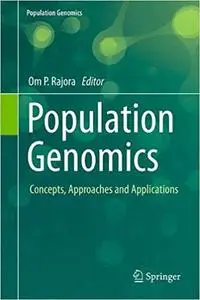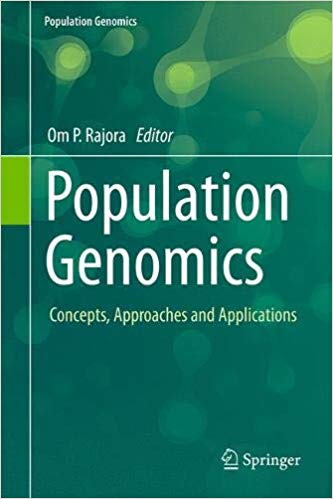Om P. Rajora, "Population Genomics: Concepts, Approaches and Applications"
English | ISBN: 3030045870 | 2019 | 822 pages | PDF, EPUB | 69 MB
English | ISBN: 3030045870 | 2019 | 822 pages | PDF, EPUB | 69 MB
Population genomics has revolutionized various disciplines of biology including population, evolutionary, ecological and conservation genetics, plant and animal breeding, human health, medicine and pharmacology by allowing to address novel and long-standing questions with unprecedented power and accuracy. It employs large-scale or genome-wide genetic information and bioinformatics to address various fundamental and applied aspects in biology and related disciplines, and provides a comprehensive genome-wide perspective and new insights that were not possible before. These advances have become possible due to the development of new and low-cost sequencing and genotyping technologies and novel statistical approaches and software, bioinformatics tools, and models. Population genomics is tremendously advancing our understanding the roles of evolutionary processes, such as mutation, genetic drift, gene flow, and natural selection, in shaping up genetic variation at individual loci and across the genome and populations; improving the assessment of population genetic parameters or processes such as adaptive evolution, effective population size, gene flow, admixture, inbreeding and outbreeding depression, demography, and biogeography; resolving evolutionary histories and phylogenetic relationships of extant, ancient and extinct species; understanding the genomic basis of fitness, adaptation, speciation, complex ecological and economically important traits, and disease and insect resistance; facilitating forensics, genetic medicine and pharmacology; delineating conservation genetic units; and understanding the genetic effects of resource management practices, and assisting conservation and sustainable management of genetic resources. This Population Genomics book discusses the concepts, approaches, applications and promises of population genomics in addressing most of the above fundamental and applied crucial aspects in a variety of organisms from microorganisms to humans. The book provides insights into a range of emerging population genomics topics including population epigenomics, landscape genomics, seascape genomics, paleogenomics, ecological and evolutionary genomics, biogeography, demography, speciation, admixture, colonization and invasion, genomic selection, and plant and animal domestication. This book fills a vacuum in the field and is expected to become a primary reference in Population Genomics world-wide.



